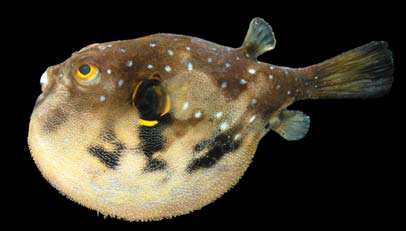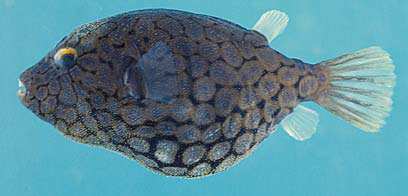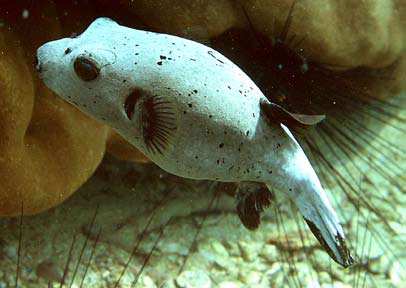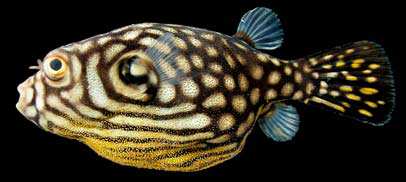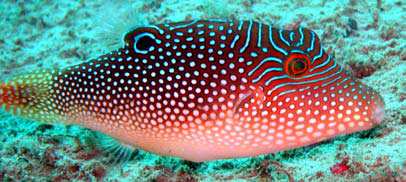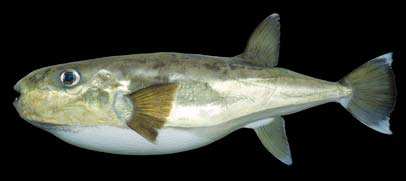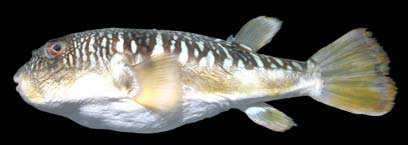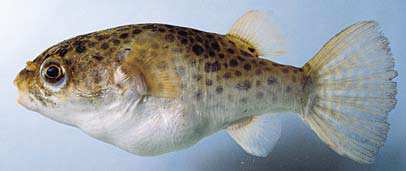TETRAODONTIDAE
Puffers
By Keiichi Matsuura
|
Small to moderate-sized fishes, most species less than 30 cm, with a heavy blunt body capable of rapid inflation by intake of water (or air). Head large and blunt; jaws modified to form a beak of 4 heavy, powerful teeth, 2 above and 2 below. Gill openings without distinct opercular cover, appearing as simple slits anterior to the pectoral fin; eyes located high on head. Dorsal and anal fins located far posteriorly bearing no spines, but 7 to 15 soft rays; caudal fin usually truncate to slightly rounded; pelvic fins absent. Typical scales absent, but most species are partially covered with tiny prickles or spinules, and many species have small fleshy tabs or lappets on the dorsal and/or lateral surfaces. Color: most species are mottled, variegated, or barred on the upper and lateral surfaces, often with spots of various sizes and colors; ventral surfaces are almost always unpigmented. Similar families occurring in the area. Diodontidae: head and body covered with strong elongate spines; 1 tooth plate in each jaw. Remarks. Occurring in tropical and temperate seas, most frequently in shallow inshore waters, sometimes entering brackish and fresh waters, but a few species are pelagic. The viscera, skin, and blood of most species are poisonous; in some species even the flesh is poisonous. Laymen are strongly recommended not to eat puffers, although connoisseurs like to consume puffers in licensed restaurants in some countries (e.g., Japan). |

|
|

